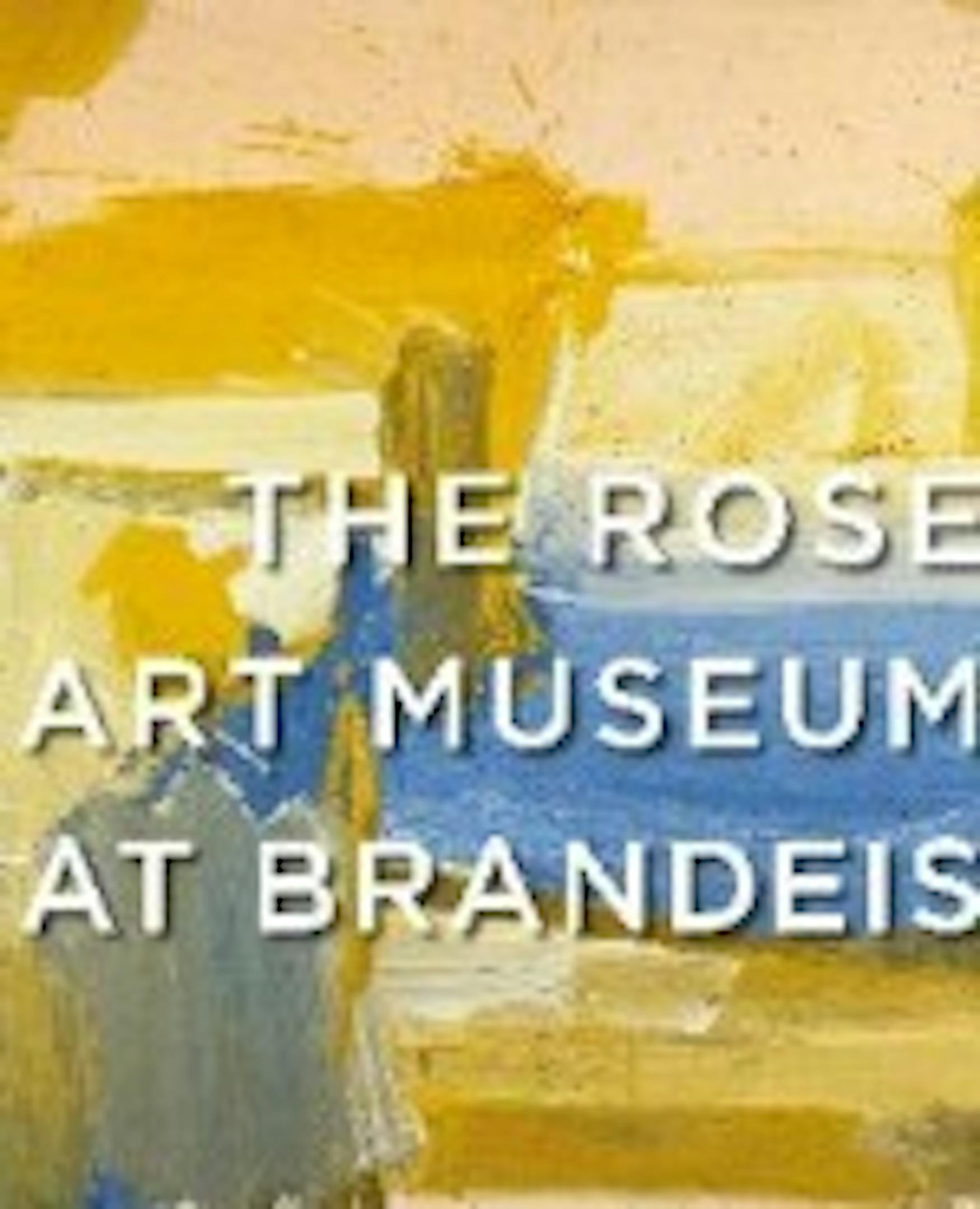The Rose's vault, opened wide
Coinciding with tomorrow's exhibition opening celebration is the recent release of The Rose Art Museum at Brandeis, a catalog of the museum's most illustrious holdings in the permanent collection. The book, which became available on Oct. 1, is the result of a two-year process of reviewing the collection, writing original essays and short descriptions of the work and preparing it for press. Ann Tanenbaum '66, a member of the Rose Board of Overseers and a former employee of Abrams Books, the publishing company that handled the book's release, helped bring the project from idea to fruition."The idea came to me because of my lifetime career in book publishing and in thinking about being an overseer of the Rose and how important the collection is. . It seemed like a perfect circle to talk to them about publishing a book [and] to talk to Harry Abrams about publishing a book on the collection of the museum," said Tanenbaum. "I knew that this would be wonderful publicity for the museum and for Brandeis and would also spread the word of the great collection and be an invaluable development mechanism as well, and of course be a magnificent book."
Over the past two years, Tanenbaum, as well as former Rose director Michael Rush, Rose Director Roy Dawes, former Assistant Curator Adelina Jedrzejczak and Profs. Peter Kalb (FA) and Nancy Scott (FA), as well as other art historians and alumni have contributed to the effort by choosing and refining the list of works to be included in the book, writing essays and catalog entries and preparing the book for printing. Said Dawes, "Adelina was really the driving force, and she was the point person for all of this. . Along with Michael Rush, we were making decisions as to what was going to be in the catalog, and so we came up with a large list of sort of the 'best of' the collection and we whittled that down to a reasonable number [of works]."
The catalog was almost finished by the time of the Jan. 26 Board of Trustees decision to authorize the sale of works from the collection. Yet the catalog's appearance now, while the museum's collection remains in something of a limbo state due to ongoing legal proceedings between the University and a group of Rose benefactors, presents something of a paradox. "When after Jan. 26 Abrams contacted me because they were concerned about whether or not we wanted to continue with the project. . I consulted with the president and others about [whether we] should continue with this, and everyone said, 'Absolutely.' We had a lot of people who had already done a lot of work in terms of writing essays, the selection of the art that would go into the catalog. . It was a big project, and we thought it's an exciting project, so we decided to go ahead with it," said Provost Marty Krauss.
Most of the people interviewed for this article saw the Rose catalog as a positive expression of the museum's brilliant collection during this uncertain time. Kim Rorschach '78, who contributed written work for the catalog, said "Since the January debacle, I'd say the role of the catalog has expanded. It will still serve to make the collection known to a broader public, which will be very impressed by the quality and breadth of the collection.The catalog will also demonstrate the tremendous educational, scholarly and artistic value of the collection, and readers will draw their own conclusions about the wisdom of the University's January decision to sell it." Rorschach, who has held the office of curator and director at two university art museums and is currently director at the Nasher Museum at Duke University, continued: "I cannot predict how others will react, but it seems to me a very good and hopeful sign that the University has moved forward with publication, and a positive response will hopefully discourage the University from further thoughts of selling the collection for general budget relief."
The catalog's contributors uniformly praised the work of their colleagues in creating the final product. "Regardless of what happens with the future of the Rose and its beloved collection, this magnificent book will remain as a testimony to the wisdom, generosity and sense of adventure of all those connected to the creation of this unique collection," said Rush.
"I am so honored and proud to be a part of such an important publication," said Helene Lowenfels '05. "I must give thanks to my beloved professor, Nancy Scott, who suggested to the former Rose curator that I participate in the project. . The Rose graciously provided me with archival information about how the pieces came to the museum, what exhibitions they had been included in on campus and where they hang today. Having spent so much of my time as an undergraduate at the museum, the entire experience was very meaningful for me."
"University art museums provide a key component of a liberal education, as they did for me, and can also provide formative job training for students in art history and related fields as well as a great site for interdisciplinary learning and interaction," said Rorschach. "My experiences at the Rose were invaluable and indeed made me who I am today.



Please note All comments are eligible for publication in The Justice.